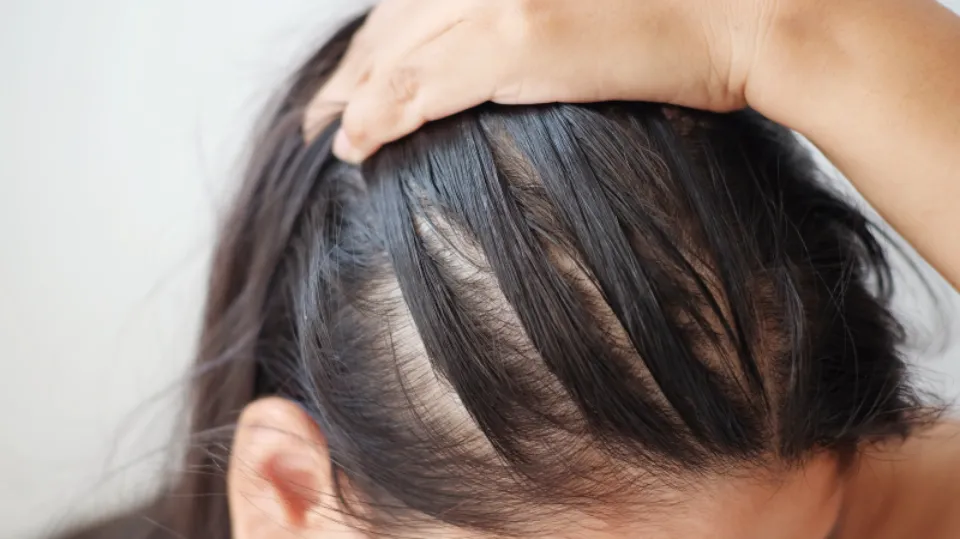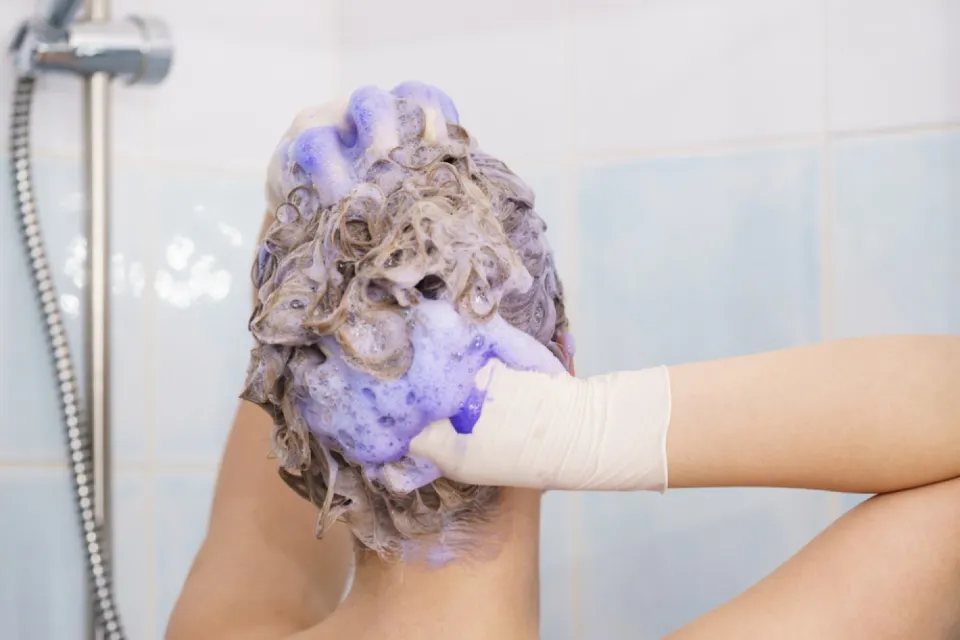It’s true that the feeling can be extremely upsetting when you realize you’re losing more hair than usual. You might wonder that can hair loss be reversed.
The good news is: Yes, in some cases. Some forms of hair loss are indeed reversible.
Once the source of your hair loss has been identified, treated, and your condition has been properly managed, you will start to experience new hair growth.
Continue reading to learn more about hair loss.
Can Hair Loss Be Reversed?
Yes, some types of hair loss can be reversed, we have listed some of them in the following:
Alopecia Areata
“Alopecia” simply means hair loss. “Areata” means occurring in patches. As an autoimmune disorder, this condition causes the body’s immune system to attack the person’s own hair follicles.
Unlike the diffuse shedding that occurs when a person has telogen effluvium or male or female pattern baldness, this harms the follicles and results in sporadic round patches of hair loss. The scalp, beard, and/or eyebrows may all experience the patches.
Telogen Effluvium

A “telogen” is a hair follicle in the resting phase. This indicates that the particular hair has reached the end of its typical growth phase and will shed when new hair starts to grow behind it. This typically takes place gradually and at various times to different follicles.
But in telogen effluvium, a lot of hair follicles all at once switch from the growing phase to the resting phase. That implies that a lot of hair will fall out at once. A shock to the system of some kind, be it physical or emotional, causes this shift.
Pregnancy, an extreme crash diet, certain illnesses, etc. can all result in a physical shock. A person may experience an emotional shock as a result of, for instance, experiencing a great deal of work-related stress or losing a family member.
One of the most typical causes of hair loss is telogen effluvium. Furthermore, it is largely curable, which means that for the majority of affected individuals, their hair does regrow. But for many, the initial shedding and loss can be distressing.
Trichotillomania
Trichotillomania is also called “hair-pulling disorder.” In a strict sense, it is not a type of hair loss because it is not brought on by aging, illness, or any other physical condition. Obsessive-compulsive disorder (OCD), a psychological condition, is entirely to blame.)
The person with this condition pulls, twists, or tugs on their eyebrows, scalp hair, and other body hair in various locations. The affected areas develop rough bald patches as a result.
Tinea Capitis
Tinea capitis is commonly known as “ringworm.” It’s critical to understand that a worm is not the actual cause of ringworm. The name comes from the circular, ring-shaped pattern in which the fungus develops on the scalp. Ringworm is not uncommon and occurs most often in children
The fungus damages the scalp’s hair, causing it to break and fall out. When a person has tinea capitis, small, round bald patches frequently develop.
If the condition is not treated, it has a tendency to worsen and the hair loss will persist.
Related Posts:
- Can Hair Dye Cause Hair Loss?
- Does Creatine Cause Hair Loss?
- Does Adderall Cause Hair Loss?
- Does Dandruff Cause Hair Loss?
- Does Dry Shampoo Cause Hair Loss?
- Does Hard Water Cause Hair Loss?
How to Reverse Hair Loss: 6 Methods
It’s not always possible to reverse hair loss, but the sooner you take action, the more likely you’ll see good results.
The science-backed solutions listed below can help many people stop or slow down hair loss, and in some cases, even regrow hair. However, this is not always possible.
1. Take Finasteride
A common prescription drug used to treat baldness is finasteride (brand name: Propecia; see Important Safety Information).
Dihydrotestosterone, a hormone that affects hair follicles and contributes to hair loss, is reduced in order for it to work (Salisbury, 2021).
2. Use Minoxidil
Rogaine is the brand name for a nonprescription liquid or foam called minoxidil, which is applied to the scalp twice daily. For the purpose of promoting hair growth, it promotes blood flow to the hair follicles.
Men under the age of 40 who have experienced hair loss for less than five years seem to respond best to minoxidil treatment. It might not be as effective if the hair loss has been going on for a while and has affected more of the scalp.
3. Use An LLLT Device
It may sound like science fiction to hold a laser wand to your head in order to regrow hair, but actual scientists claim it is possible. An FDA-approved method of treating hair loss is low-level laser therapy (LLLT).
These items, which consist of a continuous red LED light, can be worn as a cap or as a wand that you point at your scalp. Researchers believe that LLLT may cause the stem cells in hair follicles to stimulate the growth of new hair (Egger, 2020).
4. Try DHT-blocking Shampoo

The effects of DHT on hair follicles are allegedly blocked by a variety of shampoos. Some people find them to be effective, though they do not work as well as minoxidil or finasteride.
Ketoconazole, the main component of the anti-dandruff shampoo Nizoral, is present in a number of these shampoos.
5. Get Enough Vitamins and Minerals
There are many vitamin and dietary supplements on the market that promise to increase hair growth, thickness, or shine, but there isn’t much solid proof that most of them can stop hair loss—with two notable exceptions (Almohanna, 2019).
Dietary supplements may help your thinning hair if you are iron- or vitamin D-deficient. This is particularly true if you suffer from a particular type of hair loss, such as male pattern baldness, alopecia areata (hair loss brought on by the immune system attacking hair follicles), or telogen effluvium.
Read More: How to Regain Hair Loss from Stress?
6. Get PRP Treatment
Also known as “platelet-rich plasma,” this procedure involves having blood drawn, then placed in a centrifuge to extract the plasma, which is then injected into the scalp. The idea is that platelet-derived growth factors can promote hair growth.
Studies show that PRP treatments, whether used alone or in conjunction with other hair loss treatments, can enhance hair growth.
Tips to Prevent Hair Loss
Here are some tips to prevent hair loss.
Ensure a Healthy Diet

The structure of your hair follicles may be impacted by a nutrient imbalance brought on by a poor diet. An article from 2017 in the Archives of Dermatological Research suggests that eating a Mediterranean diet high in vitamins and minerals can help reduce the risk of developing androgenetic alopecia.
Since protein is primarily what makes up our hair, including foods high in it in our diets, such as fish and green leafy vegetables, may be beneficial. Keeping away from processed foods may also help encourage strong hair growth.
Limit the Use of Damaging Treatments and Excessive Styling
Excessive chemical straightening, perming, or bleaching of hair can cause breakage and damage. When done too frequently, flat ironing, curling, and tightly pulling your hair back can also harm your hair.
Use hair growth treatment products
You could experiment with over-the-counter hair care items or tonics designed to help slow hair loss.
Medication
Depending on the type of hair loss, your doctor might recommend medication that could slow hair loss and possibly promote the growth of new hair.
Also Read: How to Stop Hair Loss in Teenage Girl?
Final Words: Can Hair Loss Be Reversed
Ultimately, whether hair loss is reversible is dependent on what kind of hair loss you suffer from and the reasons for your hair loss.
If you’ve exhausted all of your options out of frustration and all you want is for your luscious locks to return, you might think about getting the right care, which ranges from minimally invasive procedures to surgical options like hair transplantation.
Contrary to popular belief, there are practical methods to restore lost hair by treating the underlying medical condition at the cellular level.
FAQs
Can Weak Hair Regrow?
If your scalp does not require healing, hair follicles will usually regrow in one to two months.
Why Am I Losing So Much Hair?
It is linked to aging, heredity, and changes in the testosterone hormone.
Can Thin Hair Become Thick Again?
A person’s hair texture cannot be changed. However, the hair may grow back after chemotherapy or pregnancy, for example.




